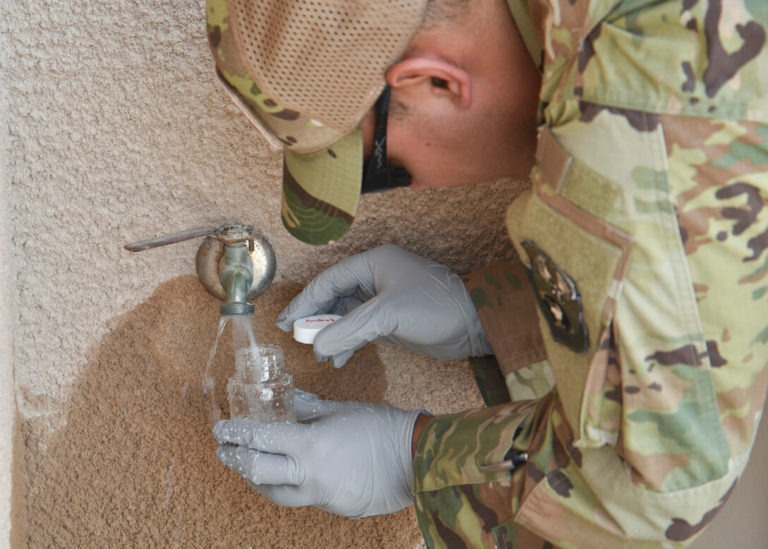What are PFAS and Why Are So Many Military Installations Affected?

Per- and Polyfluoroalkyl Substances (PFAS)
Per- and polyfluoroalkyl substances (PFAS) are a broad class of chemicals developed in the 1940s. These chemicals have the ability to repel grease and water and have been used across industries for decades. They are found in everyday items such as food packaging, non-stick pans, clothing, and furniture. However, PFAS are also found in the firefighting foam, aqueous film forming foam (AFFF), used at military bases to put out aircraft fires. PFAS are not biodegradable in the environment, meaning they are not broken down naturally. Instead, they move quickly through the Earth and into the water, where they persist indefinitely. Human and ecological exposures to PFAS can include any of the basic exposure pathways for chemicals in the environment. Specifically, if PFAS are present in water, soil, and sediment, they can be absorbed across the skin, through inhalation, or direct ingestion. Direct ingestion of PFAS is the most common form of exposure via contaminated groundwater. Importantly, PFAS have been linked to cancers, immune suppression, and other serious health problems.
How Do PFAS Affect Military Installations?
Negative health outcomes related to PFAS exposure has become a significant concern for veterans and servicemembers in recent years as the Department of Defense (DoD) has admitted that firefighting foam slipped into drinking water systems at military bases around the country. As of August 2017, DoD has identified 401 military installations in the United States with at least one area where there is a known or suspected release of PFAS. As a result, tens of thousands of Americans, possibly many more, have been exposed to PFAS through the installation’s groundwater sources. The military has since started an expensive cleanup effort that has involved shifting entire municipalities to new water sources and assessing the current exposure sites that continue to spread for miles. DoD is reportedly moving aggressively to tackle this problem, assessing clean up duties and looking for alternatives to the current firefighting foam.
PFAS cannot be detected by conventional gas chromatography mass spectrometry – a method used to identify different chemical substances within a test sample. Therefore, PFAS were not detected when the groundwater at military sites was initially screened for PFAS. Instead, it was not until the development of liquid chromatography-tandem mass spectrometry – a method capable of testing chemical substances that are soluble – that researchers had the capability to detect and quantify PFAS. After the presence of PFAS was identified, there were many signs over a number of years indicating that they have a negative impact on health. For example, DoD studies dating back to the 1970s demonstrated that the substances were harmful to lab animals. Nevertheless, the military has said it continues to use the firefighting foam containing PFAS because companies have continued to produce it and the Environmental Protection Agency (EPA) does not regulate these chemicals.
Which Military Installations are Affected?
As mentioned above, DoD has identified 401 active and Base Realignment and Closure military installations in the United States with at least one area where there was a known or suspected release of PFAS. Within those 401, there are an established 36 sites with drinking water contamination on base, and more than 90 sites that reported either on-base or off-base drinking water or groundwater contamination, in which the water source tested above the EPA’s acceptable levels of PFAS (i.e. 70 parts per trillion). DoD is first targeting the 36 direct drinking water sources that are contaminated to cut off that human exposure as soon as possible. So far, DoD has only able to do that at 24 of the 36 locations where it manages the water supply. At these sites, DoD has installed filters at the water source or inside base housing, relocated water usage to another well, or provided alternate drinking water, such as bottles, for personnel. The other 12 sites have water sources provided by contracted vendors, which makes it harder for DoD to intervene. However, DoD is reportedly working with the vendors on a solution, and providing bottled water or filters as needed. Each installation is working to have water information posted on the base, and families with concerns can talk to the base’s restoration program manager (i.e. an on-site point person tasked with addressing environmental clean up issues).
About the Author
Share this Post
